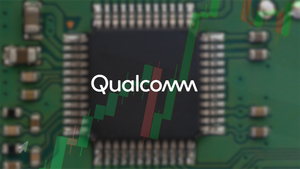
Redwood Shores, CA – Oracle (NYSE: ORCL) has delivered an "astonishing" start to its Fiscal Year 2026, with Q1 results showcasing robust cloud revenue growth and an unprecedented surge in Remaining Performance Obligations (RPO). This monumental increase in future revenue commitments, largely driven by multi-billion-dollar AI-related cloud contracts, underscores a pivotal strategic shift for the company, positioning it as a foundational provider in the burgeoning artificial intelligence landscape. The market has reacted with overwhelming positivity, sending the company's stock soaring and signaling investor confidence in Oracle's aggressive expansion into AI infrastructure.
The tech giant’s latest earnings report has not only validated its bold pivot towards cloud and AI but has also set the stage for a dramatic reshaping of the competitive dynamics within the hyperscale cloud market. With ambitious capital expenditure plans aimed at constructing a vast network of AI data centers, Oracle is clearly signaling its intent to be a primary architect of the global AI revolution, demanding attention from both Wall Street and its industry rivals.
The AI Wave Breaks for Oracle: Unprecedented Growth in Q1 FY2026
Oracle’s Q1 FY2026, ending August 31, 2025, revealed total revenues of $14.9 billion, a robust 12% year-over-year increase (11% in constant currency). While GAAP earnings per share (EPS) saw a slight decrease of 2% to $1.01, non-GAAP EPS rose 6% year-over-year to $1.47, despite slightly missing analyst estimates of $1.48. Non-GAAP operating income increased by 9% to $6.2 billion. However, the true story of Oracle's quarter, and why it matters so profoundly, lies within its cloud segment and future commitments.
Total Cloud Revenue (IaaS plus SaaS) climbed an impressive 28% in USD (27% in constant currency) to $7.2 billion. Within this, Cloud Infrastructure (IaaS) revenue was the undisputed star, rocketing by 55% in USD (54% in constant currency) to $3.3 billion, indicative of explosive demand for Oracle Cloud Infrastructure (OCI). The company also reported an astounding 1,529% growth in its MultiCloud database revenue, highlighting its strategic move to make its databases accessible across various cloud platforms. Oracle's CEO, Safra Catz, projected OCI revenue to grow 77% to $18 billion this fiscal year, with an audacious long-term forecast to reach $144 billion by FY2030.
The most eye-catching figure, however, was the staggering 359% year-over-year increase in Remaining Performance Obligations (RPO), which hit an historic $455 billion. This colossal backlog represents contracted, but as yet unrecognized, revenue and is a direct result of four multi-billion-dollar contracts secured in Q1. These monumental agreements involve major players at the forefront of AI development, including OpenAI, xAI, Meta (NASDAQ: META), NVIDIA (NASDAQ: NVDA), and AMD (NASDAQ: AMD). CEO Safra Catz even hinted that RPO could surpass half-a-trillion dollars in the near future, fueled by ongoing demand for OCI.
To support this meteoric demand, Oracle has unveiled ambitious capital expenditure plans, projecting approximately $35 billion for FY2026. This represents a 40% increase from previous forecasts and a 65% jump from FY2025, with the vast majority of this investment directed towards revenue-generating data center equipment for AI workloads, rather than land or buildings. Oracle intends to expand its data center footprint significantly, including delivering an additional 37 data centers to its hyperscaler partners, bringing the total to 71 multi-cloud data centers. This massive investment underscores the company's commitment to becoming a core provider of AI compute power.
The market's immediate response was nothing short of euphoric. Despite slight misses on some consensus estimates, Oracle's stock (NYSE: ORCL) surged between 27% and over 40% in post-market and premarket trading following the September 9, 2025, announcement. Analysts quickly revised price targets upwards, unanimously recognizing Oracle's strategic pivot and robust positioning within the AI infrastructure boom. This moment marks a critical inflection point, not just for Oracle, but for the wider tech industry, as the demand for underlying AI infrastructure becomes a key battleground.
Winners and Losers in the AI Cloud Arena
Oracle's aggressive AI cloud expansion and stellar Q1 performance are creating a distinct set of winners and losers across the technology ecosystem.
First and foremost, Oracle and its Shareholders are the clearest winners. The company has successfully transformed into a formidable AI infrastructure provider, with OCI revenue projected for explosive growth. The massive RPO backlog provides strong visibility into future revenue, cementing Oracle's position as a critical enabler for the AI revolution. Oracle’s multi-cloud strategy, which includes offering its database services within AWS, Azure, and Google Cloud environments, also saw multi-cloud database revenue grow an astonishing 1,529% in Q1, allowing Oracle to capture growth without requiring customers to entirely abandon existing cloud providers.
AI Chip Makers such as NVIDIA (NASDAQ: NVDA), AMD (NASDAQ: AMD), Broadcom (NASDAQ: AVGO), and Micron Technology (NASDAQ: MU) are massive beneficiaries. Oracle's aggressive data center expansion and its heavy reliance on high-performance GPUs for AI workloads ensure sustained demand for these companies' specialized hardware. NVIDIA, whose GPUs form the backbone of OCI's high-performance AI infrastructure, saw its stock rise 4% following Oracle’s announcement. AMD also benefited, with shares increasing 2% as Oracle integrates its Instinct MI355X GPUs. Broadcom, a key provider of networking gear, surged 10%, and Micron Technology, a memory manufacturer for AI chips, rose 4%. TSMC (NYSE: TSM), as the primary manufacturer for many of these chips, also climbed over 4%.
Leading AI Software Firms like OpenAI, xAI, and Meta (NASDAQ: META) are significant winners through their strategic partnerships with Oracle. These firms gain access to Oracle's expanding, high-performance, and potentially more cost-effective cloud resources, accelerating their AI model development and deployment. OpenAI's reported $300 billion cloud computing pact with Oracle for the "Stargate Project" exemplifies this symbiotic relationship. Furthermore, Companies Leveraging Oracle's AI Cloud, particularly enterprises with significant data and existing Oracle database investments, stand to benefit from increased flexibility, choice, and optimized performance, especially in regulated industries like finance and healthcare. Oracle Health is actively integrating AI tools into its EHR platforms. Other infrastructure providers, including Server Makers like Super Micro Computer (NASDAQ: SMCI) and Dell Technologies (NYSE: DELL), and data center construction partners, also saw gains from Oracle's CapEx plans.
On the other side of the coin, Traditional Cloud Competitors such as Amazon Web Services (AWS) (NASDAQ: AMZN), Microsoft Azure (NASDAQ: MSFT), and Google Cloud (NASDAQ: GOOGL) face intensified pressure. While Oracle's multi-cloud database strategy allows its services to run on rival clouds, Oracle's aggressive push into specialized AI infrastructure positions it as a direct and formidable competitor. Oracle's IaaS growth of 55% outpaced AWS (17.5%) and Azure (39%) in Q1 FY2026, signaling a potential shift in market share for AI training and inferencing. Oracle claims its OCI offers superior price-performance, with zero egress fees, which could attract cost-sensitive enterprises and put pricing pressure on competitors. This forces these cloud giants to re-evaluate their differentiation strategies in the rapidly expanding AI market.
Lastly, Legacy Tech Firms Slow to Adopt AI face increasing risks of obsolescence as the industry rapidly pivots towards AI. The rapid pace of AI innovation means businesses not actively investing in and leveraging AI capabilities will struggle to compete. Intel (NASDAQ: INTC), traditionally dominant in CPU-centric data center infrastructure, also faces a challenge as Oracle's focus on GPU-accelerated AI compute heavily favors NVIDIA and AMD GPUs. Intel needs to significantly ramp up its own AI accelerator offerings and secure similar high-profile partnerships to maintain its footing.
Reshaping the Digital Horizon: Industry Impact and Broader Implications
Oracle's Q1 FY2026 performance and its aggressive expansion in AI data center capabilities are poised to have a profound and multifaceted impact on the broader technology industry, influencing AI infrastructure demand, multi-cloud strategies, specialized hardware, competitive dynamics among major cloud providers, and even regulatory landscapes.
This expansion is a direct response to the "explosive demand for Artificial Intelligence (AI) workloads," particularly for training and deploying large language models. The industry is experiencing a "multi-trillion dollar data center supercycle" driven by AI, necessitating massive computational horsepower, ultra-fast networking, and efficient data pipelines. Oracle positions itself as a key provider of this infrastructure, offering OCI to AI startups and enterprises struggling to secure sufficient compute capacity elsewhere.
Oracle is also actively embracing and enabling multi-cloud strategies, a crucial trend in today's complex IT landscape where enterprises rarely rely on a single cloud provider. Its multi-cloud database revenue, which involves embedding its database services within AWS, Azure, and Google Cloud, saw extraordinary growth. This "bring AI to your data regardless of where it resides" model allows customers to leverage Oracle's robust database and AI solutions while maintaining flexibility across different cloud environments, fostering redundancy and cost-efficiency.
Furthermore, Oracle’s strategic focus is on providing high-performance, AI-optimized infrastructure. OCI is architecturally designed for compute-intensive AI workloads, featuring bare metal GPUs, RDMA networking, and NVMe storage. The company is building "AI factories" with GPU-dense clusters and superclusters capable of scaling up to 131,072 NVIDIA Blackwell or AMD MI355X processors. This emphasis on specialized hardware and a "Supercluster" architecture allows for faster model training and predictable billing, differentiating OCI from more general-purpose cloud offerings.
Oracle's aggressive AI cloud expansion directly challenges the established dominance of major hyperscalers like Amazon Web Services (NASDAQ: AMZN), Microsoft Azure (NASDAQ: MSFT), and Google Cloud (NASDAQ: GOOGL). While Oracle's multi-cloud partnerships enable its services to run on rival platforms, it intensifies competition for AI workloads. Oracle claims its OCI offers superior price-performance for AI training compared to AWS and Azure. The rapid growth of Oracle’s cloud infrastructure business is reportedly outpacing that of the "Big Three" at comparable revenue scales. In response, major cloud competitors are also plowing tens of billions of dollars into expanding their data center footprints and enhancing AI capabilities.
The increasing concentration of AI compute power among a few dominant players, including Oracle, raises concerns about potential market dominance and control over critical AI infrastructure. This could attract antitrust scrutiny from regulators globally. Oracle is proactively addressing the growing global demand for data sovereignty through offerings like its EU Sovereign Cloud and OCI Dedicated Region, allowing customers greater control over data location and operations, a crucial factor for public sector organizations and regulated industries.
Historically, Oracle's current trajectory draws parallels to the 19th-century industrial railroad boom, where massive capital investments became the backbone of economies, similar to how cloud infrastructure and AI are now forming the foundation of modern digital economies. The current AI revolution also mirrors the microchip revolution of the 1960s-80s and the cloud computing wave of the 1990s-2000s, where early adoption of transformative technologies led to significant market shifts and new opportunities.
What Comes Next: The AI Cloud Race Intensifies
Oracle's Q1 FY2026 performance and aggressive expansion in the AI cloud market signal a significant shift in its strategic direction, positioning the company as a major contender in the rapidly evolving artificial intelligence landscape. The tech giant's recent financial results and multi-billion-dollar partnerships underscore its commitment to becoming a pivotal AI infrastructure provider.
In the short-term (next 1-2 years), Oracle can expect accelerated revenue growth driven by the massive RPO backlog, projected to exceed half a trillion dollars, particularly from AI workloads. Oracle expects its cloud infrastructure business revenue to rise 77% in fiscal 2026 to $18 billion. The company will likely deepen its AI partnerships, leveraging its "neutral" cloud platform to attract more AI innovators who might be wary of relying solely on cloud providers that also develop their own large language models. With embedded generative and predictive AI agents in Oracle Fusion Applications, the company is poised to help enterprises operationalize AI quickly. Its multi-cloud and hybrid cloud dominance, evidenced by 1,529% growth in multi-cloud database revenue, will continue to be a key differentiator.
Long-term (beyond 2 years), Oracle projects its cloud infrastructure revenue to grow from $18 billion in FY2026 to $144 billion by FY2030, aiming to achieve a size comparable to Google Cloud. This trajectory suggests a substantial reshaping of the cloud infrastructure market, with Oracle aiming to become a dominant AI infrastructure provider through its focus on high-performance computing for AI training and inferencing. The upcoming "Oracle AI Database" that enables customers to use various large language models (Gemini, ChatGPT, Grok) will further integrate AI capabilities with its foundational database strength, along with continued global expansion and sovereign cloud offerings.
For Oracle, strategic pivots and adaptations include sustaining massive capital investment (estimated $35 billion in FY2026, peaking at $88 billion by FY2030) to meet demand, even if it leads to short-term negative free cash flow. Maintaining its "neutrality" as a platform provider will be crucial, along with significant talent acquisition and retention for specialized AI and cloud engineering. For Major Competitors (AWS, Microsoft Azure, Google Cloud), increased AI infrastructure investment, enhanced generative AI offerings, adaptation of pricing and service models, and reinforcement of their broader cloud ecosystems will be necessary counter-strategies. They may also pursue or deepen partnerships with specific AI startups or chip manufacturers.
Market opportunities include more choice and potentially more cost-effective infrastructure for AI innovators, better pricing and diverse service offerings for enterprises, and massive demand for GPUs and related hardware for manufacturers. Challenges include intensified competition, high capital expenditures, talent shortages, complex data management and governance across multi-cloud AI environments, and increased regulatory scrutiny.
Potential scenarios range from an optimistic outcome where Oracle becomes a "hyperscaler challenger," consistently converting RPO into revenue and expanding OCI market share significantly, to a challenging scenario where capital expenditure outstrips revenue growth due to intense competition or execution difficulties. A moderate scenario would see Oracle maintaining strong growth as a niche player, significantly influencing enterprise AI adoption but not fully catching up to the "Big Three" in overall cloud market share.
The AI Future is Now: Conclusion and Investor Outlook
Oracle's Q1 FY2026 results cement its position as a major force in the AI cloud revolution. Its strategic pivot, characterized by massive AI-driven RPO growth and significant infrastructure investments, has fundamentally altered its market standing. The key takeaways from this quarter are the extraordinary demand for OCI, propelled by multi-billion-dollar AI contracts, and Oracle's unwavering commitment to becoming a foundational AI infrastructure provider globally.
The overall market for AI infrastructure and cloud computing is experiencing explosive growth. Demand for AI infrastructure is intensifying, with enterprise spending on AI-centric systems projected to grow at a 27% annual rate through 2026. The AI data center market alone is forecast to grow at a 28.3% CAGR through 2030, with 33% of global data center capacity expected to be dedicated to AI by 2025. This structural realignment, driven by Oracle, is challenging existing hyperscaler dominance and redefining the cloud value proposition by specializing in AI-optimized infrastructure and embracing multi-cloud adoption.
This strategic shift has a lasting impact on the tech industry, intensifying competition and spurring further innovation as rivals respond. Oracle is emerging as a formidable challenger to the established cloud giants, forcing them to reassess and diversify their own AI strategies. Its focus on specialized AI infrastructure, multi-cloud capabilities, and integrating its AI Database with various LLMs is reshaping how enterprises consume and leverage AI.
For investors, several key indicators warrant close monitoring in the coming months. First, CapEx Trends and Execution: Oracle's projected $35 billion in CapEx for FY2026 is substantial. Investors should watch for the company's ability to efficiently deploy this capital and secure critical resources. While these investments are crucial for long-term growth, they are expected to result in negative free cash flow for several years. Second, RPO Conversion to Revenue: The massive $455 billion RPO backlog provides unprecedented revenue visibility. The critical task for Oracle is to efficiently convert these contracted obligations into actual revenue. Third, Competitive Responses: Investors should closely observe how AWS, Microsoft, and Google respond to Oracle's aggressive inroads into the AI infrastructure market. Oracle's ability to maintain its differentiation will be vital. Fourth, Ongoing AI Adoption Rates and ROI Realization: The sustained high rate of enterprise AI adoption and the realization of tangible economic returns from AI investments will be fundamental to Oracle's growth trajectory. Finally, Partnerships and Ecosystem Development: Further announcements regarding partnerships with major AI model developers or specialized hardware providers will signal continued strength in Oracle's ecosystem.
While execution risks remain, particularly regarding CapEx deployment and RPO conversion, the overarching trend of burgeoning AI adoption and the critical need for robust AI infrastructure create a compelling long-term outlook for Oracle and the broader tech industry. Oracle's gamble on AI appears to be paying off, setting the stage for a dramatic and influential period in its corporate history.






